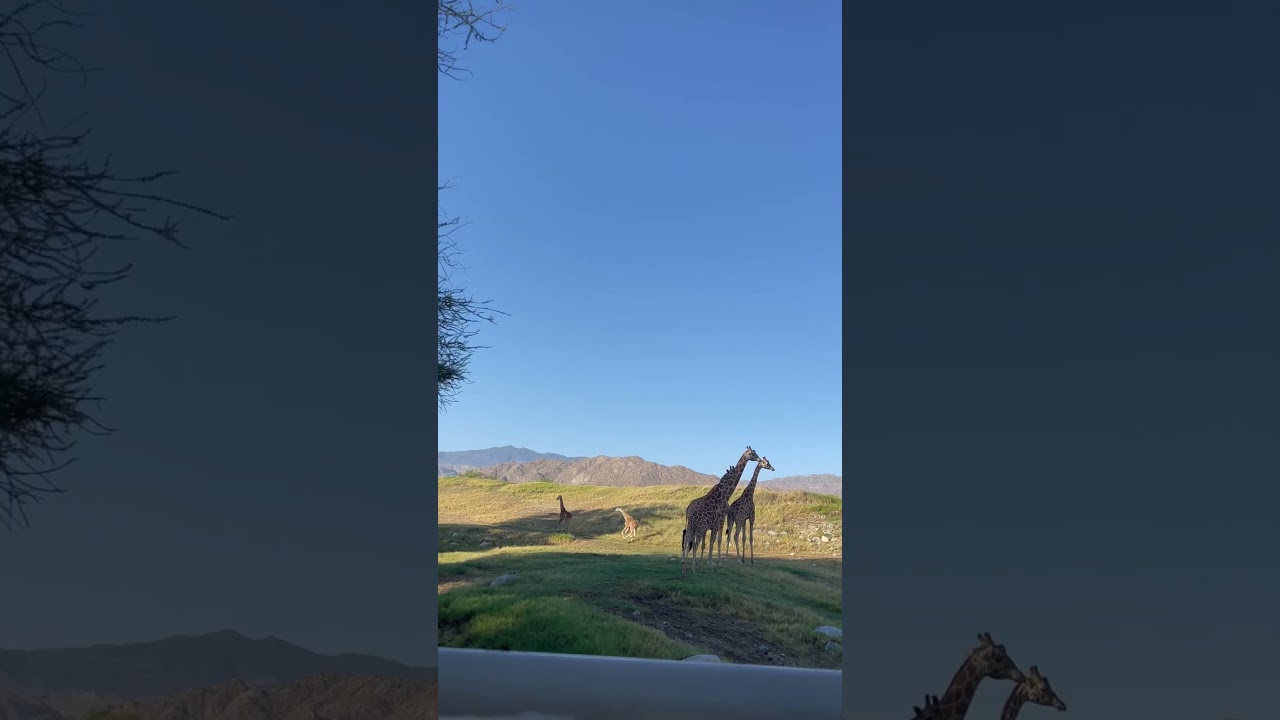– Understanding the concept of “Vroom Vroom 🦒🚗💨 #TheLivingDesert #Zoomies” in modern zoos and conservation efforts.
– The role of enrichment activities in promoting the well-being of animals in captivity.
– Enhancing visitor experiences through interactive and educational programs.
– The impact of social media on wildlife conservation awareness.
– Strategies for sustainable zoo management in the context of conservation.
The term “Vroom Vroom 🦒🚗💨 #TheLivingDesert #Zoomies” captures a playful and enticing aspect of zoo management and wildlife conservation where animals display bursts of energy or ‘zoomies,’ often showcased in themed enrichment activities. This concept has become increasingly popular in zoos, serving as a form of entertainment for visitors and as a crucial component of animal welfare and conservation education. By analyzing these dynamic practices, we can gain profound insights into their significance for modern zoological parks and conservation initiatives.
Engaging animals in activities stimulating their natural behavior is vital for their physical and mental health. Enrichment activities, such as those dubbed “Vroom Vroom 🦒🚗💨 #TheLivingDesert #Zoomies,” are designed to encourage natural behaviors seen in the wild, offering a lively spectacle for zoo-goers while emphasizing the importance of wildlife preservation. These offerings include a variety of physical structures for climbing, hiding, or exploring alongside puzzles that encourage problem-solving. Such enrichments are pivotal in ensuring the animals’ environment is stimulating and enriching, promoting healthier, more active lifestyles.
Visitor engagement is another significant facet incorporating entertaining yet educational content like “Vroom Vroom 🦒🚗💨 #TheLivingDesert #Zoomies” into zoo programming. These programs amuse and serve as powerful educational tools, sparking curiosity about the natural world and conservation issues. Interactive experiences enable visitors to form a personal connection with wildlife, inspiring a deeper understanding and appreciation for the challenges these animals face in the wild. This emotional connection is fundamental to fostering a culture of conservation and environmental stewardship among the general public.
The surge in social media has introduced an innovative avenue for raising awareness about wildlife conservation. Sharing moments from “Vroom Vroom 🦒🚗💨 #TheLivingDesert #Zoomies” online can captivate a global audience, spreading the message of conservation beyond the physical boundaries of the zoo. This digital reach is invaluable for conservation efforts, offering an engaging platform to educate the public about endangered species and the importance of biodiversity. Through captivating content, zoos can mobilize support for conservation initiatives, driving local and international efforts to protect vulnerable habitats and species.
Sustainable zoo management is essential for aligning the operations of a zoological park with broader conservation goals. This involves adopting practices that support environmental conservation, research, and education. In the context of activities like “Vroom Vroom 🦒🚗💨 #TheLivingDesert #Zoomies,” sustainable management entails creating programs that delight and educate visitors and contribute to the overarching mission of conservation. Strategies include carefully selecting species for breeding programs aimed at re-establishing populations in the wild, alongside developing habitats within the zoo that mimic natural environments as closely as possible. Integrating conservation messages into all aspects of zoo operations ensures that every visit has the potential to transform public attitudes toward wildlife preservation.
In summary, the engaging phenomenon of “Vroom Vroom 🦒🚗💨 #TheLivingDesert #Zoomies” exemplifies an innovative approach to zoo management and wildlife conservation, blending education, entertainment, and environmental stewardship. Through careful planning and creative programming, zoological parks can play a pivotal role in preserving biodiversity and fostering a connection between the public and the natural world. These efforts are crucial for ensuring animals’ well-being in captivity while inspiring a broader commitment to conservation actions among communities globally.
*****
Source Description


